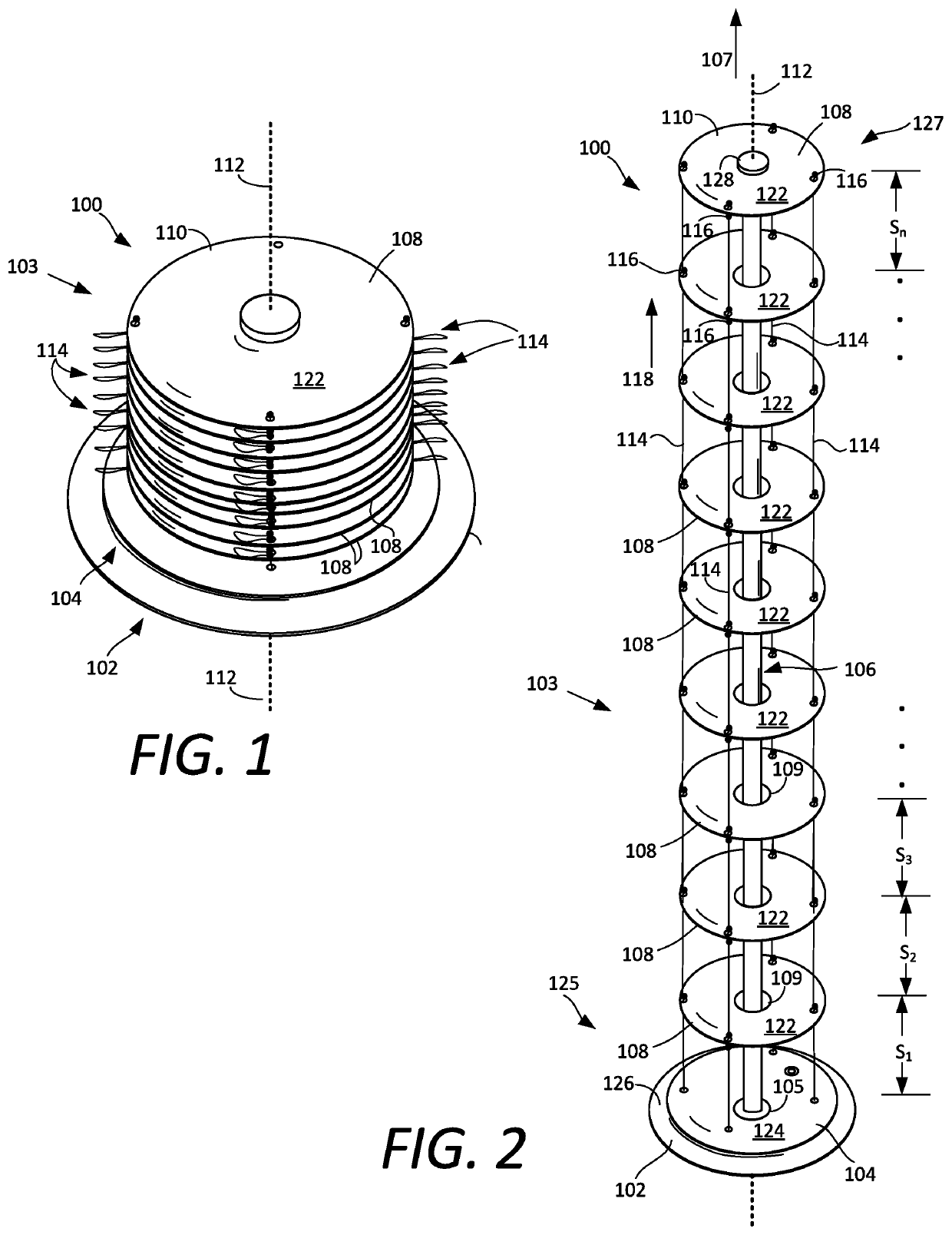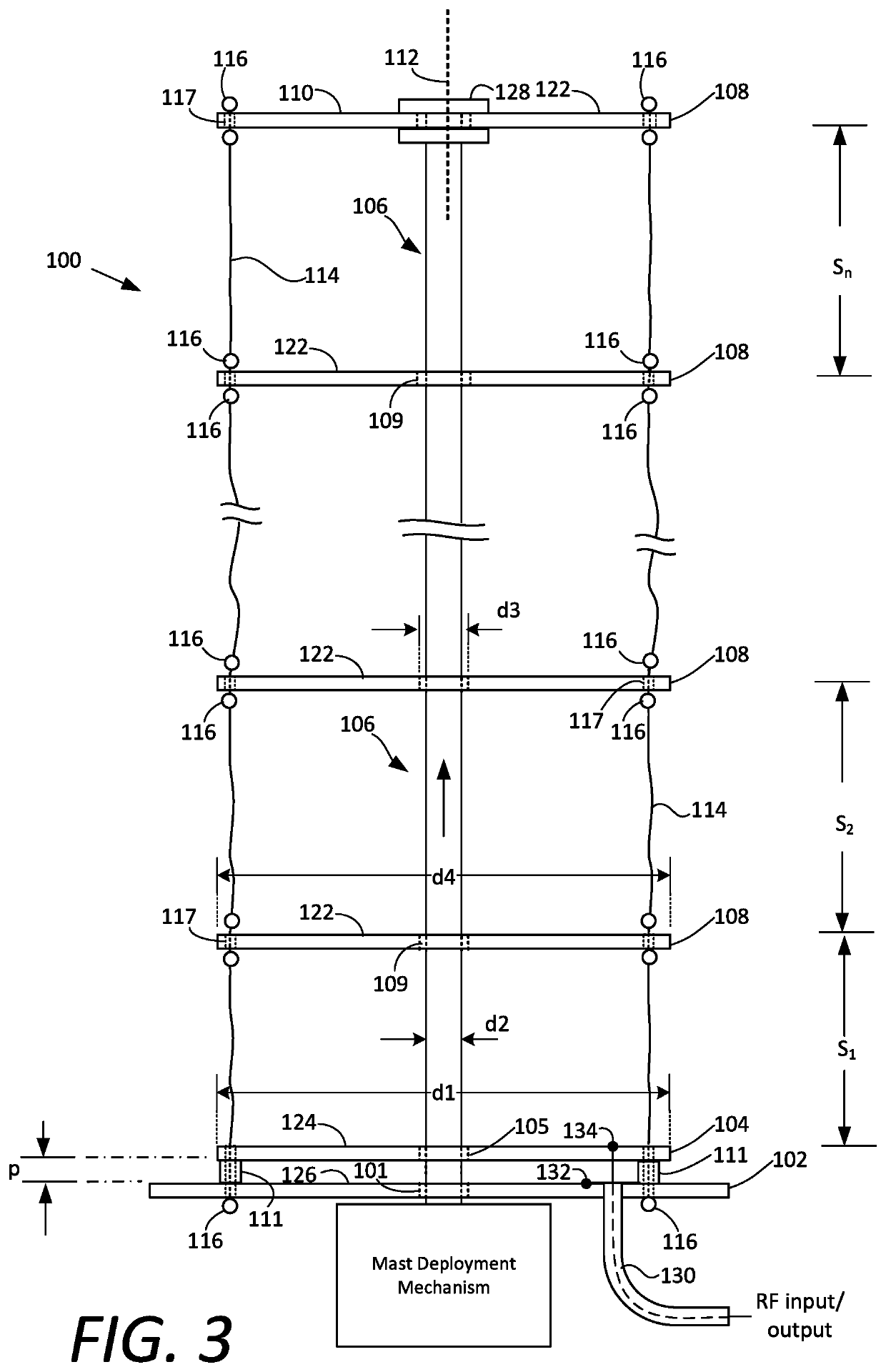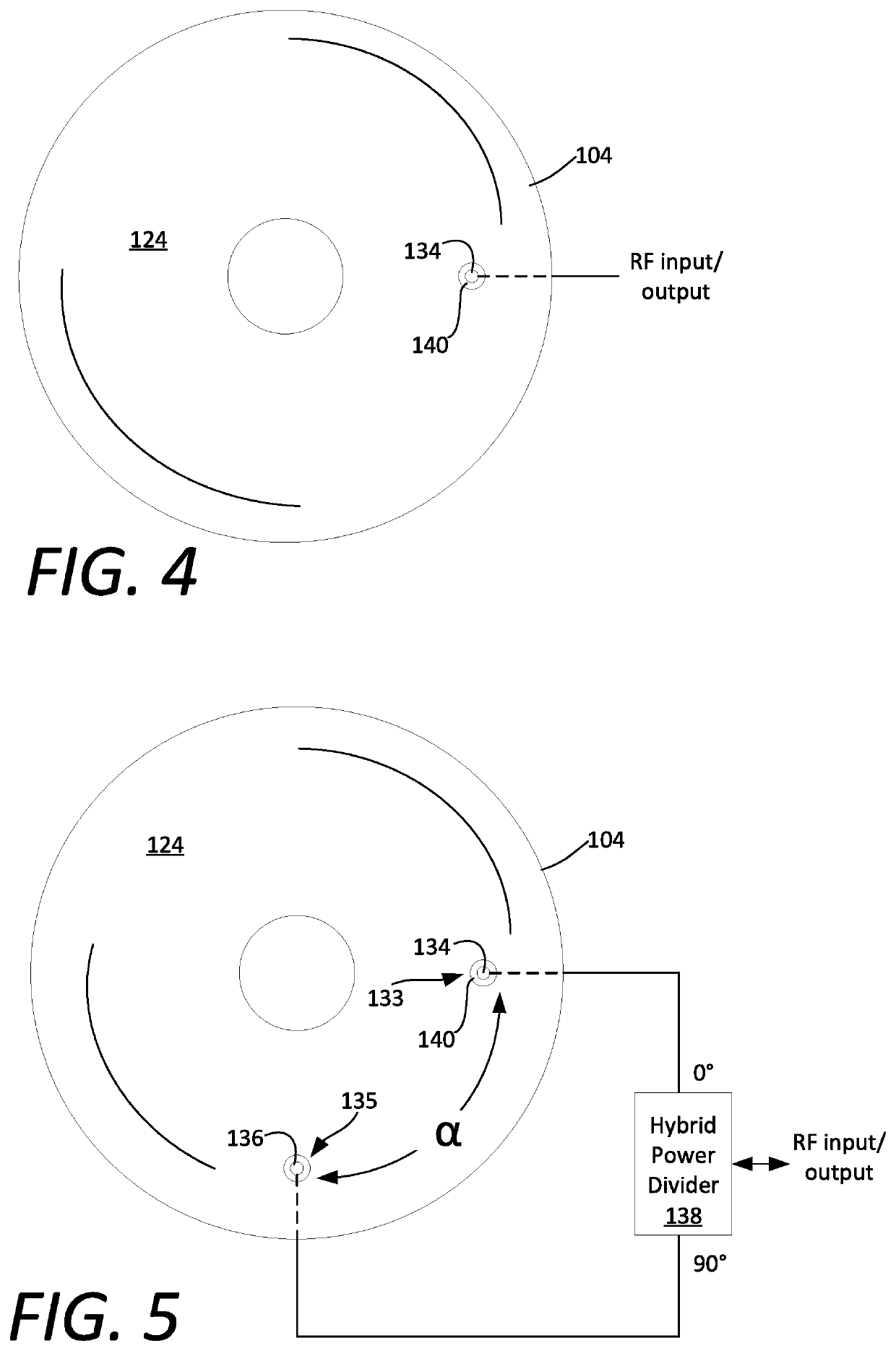Deployable disk antenna
a technology of deployable antennas and disks, applied in the direction of collapsable antennas, antenna earthings, radiating element structural forms, etc., can solve the problems of difficult to facilitate high gain, difficult to provide high-gain deployable antennas, and inefficient helix operation for length
- Summary
- Abstract
- Description
- Claims
- Application Information
AI Technical Summary
Benefits of technology
Problems solved by technology
Method used
Image
Examples
Embodiment Construction
[0025]It will be readily understood that the solution described herein and illustrated in the appended figures could involve a wide variety of different configurations. Thus, the following more detailed description, as represented in the figures, is not intended to limit the scope of the present disclosure, but is merely representative of certain implementations in various different scenarios. While the various aspects are presented in the drawings, the drawings are not necessarily drawn to scale unless specifically indicated.
[0026]Certain aspects of a deployable antenna system described herein may be understood with reference to FIGS. 1-3. The disk antenna 100 is comprised of a plurality of plates which are arranged to form a stack 103. The plurality of plates include a ground plane plate 102, a plurality of electrically active plates 108, and a drive plate 104 that is disposed between the ground plane plate and the plurality of electrically active plates. The plates in the stack a...
PUM
 Login to View More
Login to View More Abstract
Description
Claims
Application Information
 Login to View More
Login to View More - R&D
- Intellectual Property
- Life Sciences
- Materials
- Tech Scout
- Unparalleled Data Quality
- Higher Quality Content
- 60% Fewer Hallucinations
Browse by: Latest US Patents, China's latest patents, Technical Efficacy Thesaurus, Application Domain, Technology Topic, Popular Technical Reports.
© 2025 PatSnap. All rights reserved.Legal|Privacy policy|Modern Slavery Act Transparency Statement|Sitemap|About US| Contact US: help@patsnap.com



